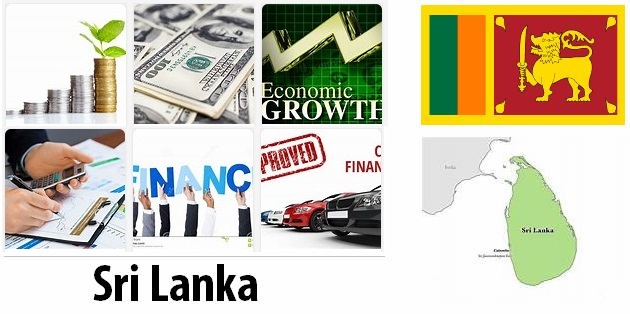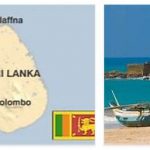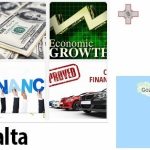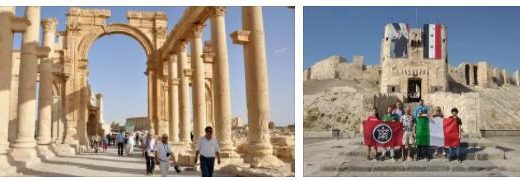Sri Lanka Economy Facts
Economical overview
Sri Lanka has good basic prerequisites for getting a good economy: a broad economic base with income from different industries, as well as a fairly good public health and a relatively high level of education among the residents. Nevertheless, the country is both indebted and dependent on aid, and many Lankes live in poverty. The long civil war (1983–2009) is only partly an explanation for it.
The Sri Lankan governments have been pursuing a liberal economic policy since the 1980s with liberalization and privatization (see Modern History). The country’s two competing parties, right-wing UNP and left-wing SLFP, have roughly the same market economy program, although SLFP advocates a larger role for the state in the economy than UNP.
- Countryaah.com: Major imports by Sri Lanka, covering a full list of top products imported by the country and trade value for each product category.
The main focus of the economy has shifted from agriculture to service and industry. In the 1970s, tea, coconut and rubber accounted for 90 percent of export earnings. Subsequently, these goods’ share of exports fell. Instead, the manufacturing industry, primarily the textile industry, has become increasingly important for exports. Clothing and textiles are now the single largest export products (45 percent of exports in 2018).
However, the manufacturing industry’s share of GDP has not increased to the same extent. Instead, the construction industry and the service sector have grown, in particular tourism and financial services. The service sector also includes a large state administration and relatively well-developed social services. Tourism has gained momentum since the end of the war. The IT and telecom sectors have also grown strongly.
- Abbreviationfinder.org: Check this abbreviation website to find three letter ISO codes for all countries in the world, including LKA which represents the country of Sri Lanka. Check findjobdescriptions to learn more about Sri Lanka.
Deficits in the Treasury and foreign trade
Sri Lanka’s export revenues are not enough to cover the cost of imports, and since the 1950s, the country has been suffering from trade deficits abroad. In the 1970s, the government tried to rectify the current account deficit by raising tariffs against the outside world and building up a domestic industry that would produce replacement goods for traditional imports. But the plans failed and thus the trade was deregulated and the country invested in developing industries for export.
The deficit in trade is covered by foreign loans and aid, as well as by money sent home by about 1.7 million people who work abroad. The country therefore has a considerable foreign debt. As a result of the debt burden, economic development has been largely controlled by credit institutions such as the World Bank and the IMF. In exchange for loans, the institutes have, among other things, demanded that Sri Lanka implement privatizations and cuts in the public sector.
The civil war brought severe stress to the economy as large resources went to the military. But the economic collapse suffered by many war-torn countries did not occur in Sri Lanka. The reason was that the war was mainly fought on one third of the land area, the eastern and northern parts, where one seventh of the residents live and who contribute one tenth of GDP. In the war-torn Tamil-dominated areas, however, economic development stagnated, or turned downward.
Tourism was negatively affected in the country as a whole, but other basic industries based in the south and west were not affected to the same extent. Expenditure on the war helped drive economic growth at the national level, and it remained steady throughout the period.
Debt and payment crisis
The reconstruction after the end of the war increased the pressure on growth and attracted foreign investors to the country. However, as early as 2009, Sri Lanka was in a payment crisis as a result of falling export revenues, declining contributions from foreigners and high oil prices. The shortage of foreign currency became acute and Sri Lanka was forced to apply for a loan of $ 2.6 billion from the IMF – more than the country received from the IMF in the previous 30 years.
The government tightened the lashing strap and the state’s expenditures were gradually slimmed down as more fees and taxes began to be collected. Nevertheless, the state’s finances did not collapse and even today there are large deficits in the state budget.
In early 2016, the government was forced to re-apply for a loan from the IMF since the country was in a new acute debt crisis. The Rajapaksa government had borrowed around eight billion dollars from China and the Sirisena government had spent a lot of money at the beginning of its term to fulfill election promises. In March, Sirisena decided on a number of tax increases, a planned reduction in corporate tax was postponed in the future and capital gains tax was reinstated. The following month, the IMF granted a three-year loan totaling $ 1.5 billion to support the government’s efforts to boost economic growth and increase tax revenue. A domestic political crisis in 2018 (see Current policy) caused the IMF to extend the loan deadline by one year to 2020.
One of President Gotabhaya Rajapaksa’s first measures after his government took office in the fall of 2019 was to lower a number of taxes in an attempt to boost the country’s crisis economy. Among other things, the VAT was lowered on certain goods to stimulate private consumption, and corporate taxes were lowered to facilitate the industry.
FACTS – FINANCE
GDP per person
US $ 4,102 (2018)
Total GDP
US $ 88,901 million (2018)
GDP growth
3.2 percent (2018)
Agriculture’s share of GDP
7.9 percent (2018)
Manufacturing industry’s share of GDP
16.2 percent (2018)
The service sector’s share of GDP
56.8 percent (2018)
Inflation
4.1 percent (2019)
Government debt’s share of GDP
83.3 percent (2018)
External debt
US $ 50 142 million (2017)
Currency
langesisk rupee
Merchandise exports
US $ 11,890 million (2018)
Imports
US $ 22,233 million (2018)
Current account
– US $ 2,814 million (2018)
Commodity trade’s share of GDP
39 percent (2018)
Main export goods
clothing and textiles, tea, gemstones, coconut, rubber, jewelry, spices
Largest trading partner
Exporting countries: USA, UK, India, Germany. Importing countries: China, India, United Arab Emirates













